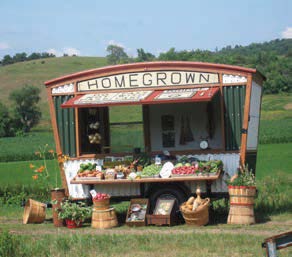Are you ready to turn your homestead into a business? If so, a financial plan is necessary to understand your business, set goals, and beat the competition. Roughly 80% of small businesses survive the first year, and only half survive five years or longer. Proper planning can help your business endure the long haul, even when challenges come your way.

Step 1: Understand Your Business
You can’t determine a financial plan for your business until you understand it. Start with writing a page-long summary of your business concept.
Ask yourself the following questions:
• What do you want to offer?
• Who are your customers?
• Why is your business different?
• What type of reputation do you want?
Be sure to delve into your business’s background, such as the history and mission statement, even if brand new. What encouraged you to start a business? Why does homesteading matter to you?
You should also list the names and descriptions of your products. If you plan to sell baked goods, come up with creative titles and write short blurbs with information on the ingredients. If you want to sell fresh eggs, talk about your chickens and the healthy diet and free-range lifestyle you provide.
Step 2: Set Smart Goals
There is no plan without a goal. When crafting a financial plan for your homestead business, think ahead to what you hope to accomplish. Do you want to break even? Or do you want to make $5,000 in annual profit?
For maximum success, experts recommend setting S.M.A.R.T. goals, objectives that are specific, measurable, attainable, relevant, and time-bound. Be practical about what you want to achieve and how you can make it a reality.
One example of a goal is to make more money on your homestead than the previous year. But this goal is vague and open to interpretation. Is $1 profit more reaching your goal? How about $10,000 more?
A smart goal would be to earn $2,000 more in profit than the previous year. This goal is specific and quantifiable, leaving no room for argument.
Step 3: Know Your Audience
Now is the time to delve into your potential customer base. Research your industry — whether you plan to sell home-baked goods, organic milk, or fresh fruits and vegetables — and determine what buyers want.
If your business is already up and running, ask customers about their experience and if there’s anything they would change. And don’t skip “bad” customers — even negative feedback can be constructive.
Once you understand your audience, it’s time to construct buyer personas. A persona is a detailed look at your ideal customer, including age, gender, income, and more. Determine your buyer’s most significant challenges and how you might be able to solve them.
For example, if you live in an area where it’s hard to find affordable organic produce, you can offer a spot where fresh and healthy fruits and veggies can be found at a fair price. If there’s another homestead in your area that customers find it hard to communicate with, provide several avenues for customers to contact you, including online and by phone.
Step 4: Understand Your Competition
You know your goals and who you want to target. But what about other businesses or homesteads you compete with?
Identify your competitors, whether it’s a rival farm, fruit stand, or grocery store, and gather as much information about them as possible. Evaluate their products and how they compare to your own. If you plan to sell homemade bread, head to the farmer’s market on the other side of town and purchase a loaf to try. Is your product fresher? Perhaps more affordable?
Analyze your competition’s strengths and weaknesses. Are they in an ideal location? Do they have stellar customer service? Do they offer rock-bottom prices? Understand what your competition is doing right so you can emulate their strategy. But you should also understand their weak points so you can define your competitive advantage.
In the end, you need to answer one question — why will customers pick your homestead over another business? For many, running a homestead business is a dream. You can spend time on your farm, tending to your crops and animals, while doing something you love. But making money from the endeavor is a bit more challenging. If you’re ready to open the doors on your business, follow the four steps above to create a financial plan that will get you through thick and thin.
Holly Welles is a home & garden writer with an interest in sustainable trends. You can find more of her work on her blog, The Estate Update a real estate and home improvement blog.






